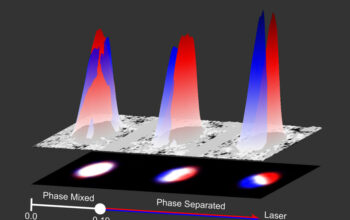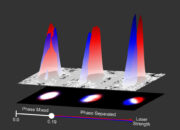The intricate web of cellular structures within the human body can be likened to a bustling city, where each cell acts as a dedicated building contributing to the overall functionality of the metropolis. Just as a city can be compromised by structural weakness, so too can the cellular architecture be rendered vulnerable, leading to the insidious spread of tumors. At the intersection of biology and physics, researchers have begun to unravel the enigmatic relationship between cell softening and the propensity for cancerous growth to metastasize. This discourse seeks to elucidate the critical biophysical principles underpinning such phenomena.
To comprehend the concept of cell softening in the context of tumor progression, one must first appreciate the mechanical properties of cells. Cells have been found to possess a remarkable duality; they are both resilient and pliable. Healthy cells maintain a specific rigidity and integrity, akin to a well-engineered skyscraper. Tumorous cells, however, resemble dilapidated structures—compromised due to pathological alterations in their cytoskeletal architecture. This cellular transformation leads to a decrease in elasticity, ultimately contributing to their migratory prowess. The very essence of tumor progression can, therefore, be metaphorically likened to a series of dominoes falling, where the initial perturbation enables a cascade of malignancy throughout the surrounding tissue.
Cellular mechanics hinge on the cytoskeleton, an intricate latticework of protein filaments that provides structure and enables motility. The cytoskeletal proteins, primarily actin and myosin, work synchronously to maintain cell shape and facilitate movement. With cancer progression, the kinetics of these proteins are altered. This dysregulation results in a softened cellular phenotype, which facilitates migration through interstitial spaces—akin to water flowing through easily navigable terrain. This phenomenon underscores the significance of mechanical interfacial interactions between malignant cells and their microenvironment, which can drastically enhance their metastatic capabilities.
Moreover, the biophysical properties of the extracellular matrix (ECM), the supportive scaffolding surrounding cells, play a pivotal role in this intricate dance of cellular behavior. The ECM is not merely a passive support system; it actively influences cellular decisions relating to proliferation, differentiation, and migration. When cancer cells encounter a rigid ECM, they tend to exhibit constrained movement, which serves as a barrier to invasion. Conversely, a softer ECM promotes a propensity for invasive behavior, fueling the narrative of metastasis. Thus, the Fate of cancerous cells is inherently intertwined with the physical properties of their surroundings, driving home the point that every structural nuance at the molecular level possesses profound implications.
As we delve deeper into the physics of cancer, we must consider the mechanical forces exerted by and upon the cells. Tumor cells, known for their hyperactive nature, exert forces that influence their neighboring cells and the ECM. This interaction often alters the stiffness of the surrounding matrix, engendering a feedback loop that abets further tumor spread. Such mechanotransduction—the process by which cells convert mechanical stimuli into biochemical signals—illustrates the complexities of tumor biology. Experimentation reveals that the application of mechanical stress can significantly enhance or attenuate the invasive potential of cancer cells, demonstrating the dual nature of mechanical forces: they can either hinder or facilitate malignancy based on the magnitude and direction of the exerted stress.
This fluid dialogue between physical forces and cellular activity underscores the need for an interdisciplinary approach to cancer research. The fusion of physics, biology, and engineering has birthed novel therapeutic modalities, including mechanotherapy—a burgeoning field that seeks to exploit the mechanical properties of tumor cells and their microenvironment. Innovative strategies, such as the application of targeted mechanical forces to stiffen the ECM or disrupt the mechanotransduction pathways, hold the promise of thwarting tumor spread. Concepts that once resided in the realm of theoretical physics are now being transposed into actionable cancer therapies, showcasing the translational potential of this research.
Furthermore, the investigative lens of cancer physics is not limited to primary tumors but extends to metastatic sites as well. Research now suggests that variations in tissue stiffness across different anatomical locations can dictate the metastatic behavior of various cancer types. Just as certain urban districts are more prone to hazardous situations due to structural vulnerabilities, so too can certain tissues offer a conducive environment for cancer dissemination. Understanding these regional differences in mechanical properties is pivotal in predicting where disseminated cells are likely to flourish and form secondary tumors, thus enabling the design of preemptive therapeutic interventions.
As we examine the complex interplay of cell softening, mechanical forces, and tumor dynamics, we witness a ballet of biological and physical phenomena. The dance of metastasis illustrates that cancer is not merely a biological aberration; it is a complex system governed by physical laws. By harnessing the principles from the realm of physics, it becomes evident that a comprehensive understanding of tumor biology necessitates an appreciation for the mechanistic forces at play. Ultimately, unraveling the physics of cancer opens new avenues for innovative treatments, reinforcing the idea that in the battle against malignancy, every decision and interaction at the cellular level matters profoundly.
Thus, in our quest to combat cancer, embracing the uncharted territory at the nexus of biology and physics becomes imperative. The paradigm shift towards viewing cancer not solely as a pathological condition, but as a physical phenomenon with tangible, measurable properties, could illuminate the path toward groundbreaking therapies that can change the landscape of treatment and enhance the lives of those affected by this formidable disease.









